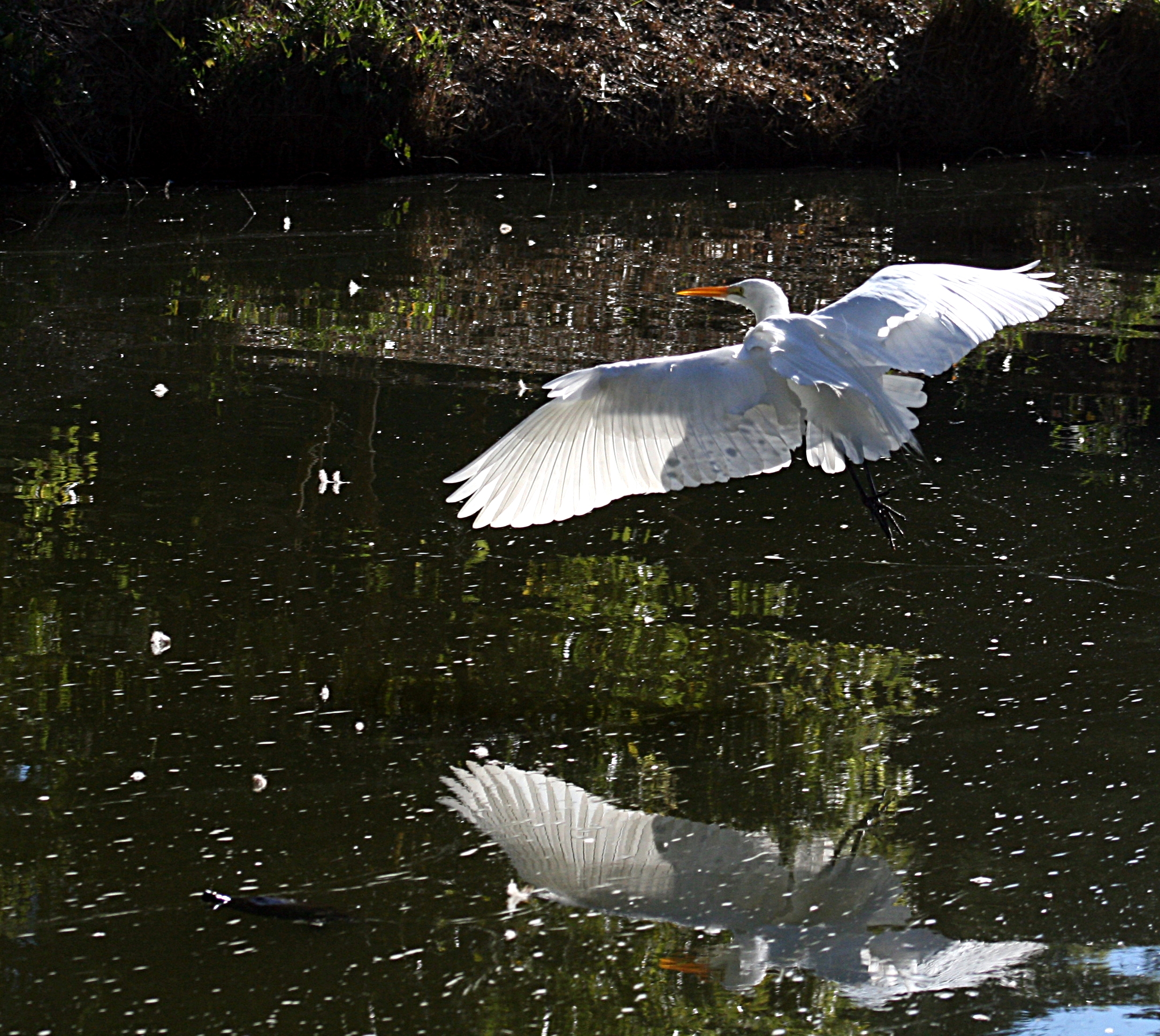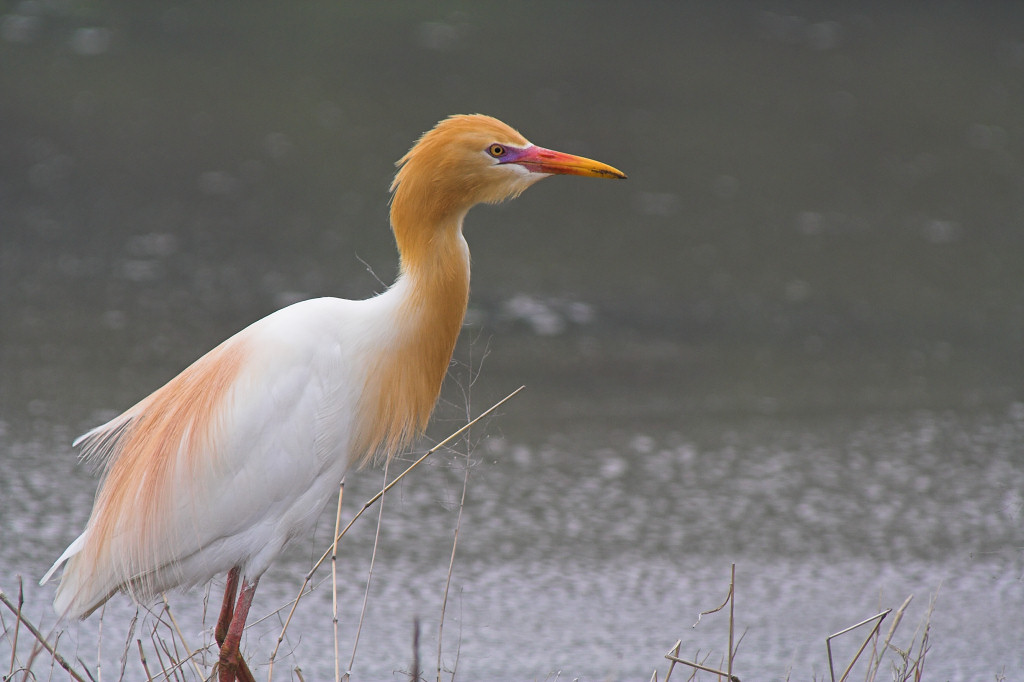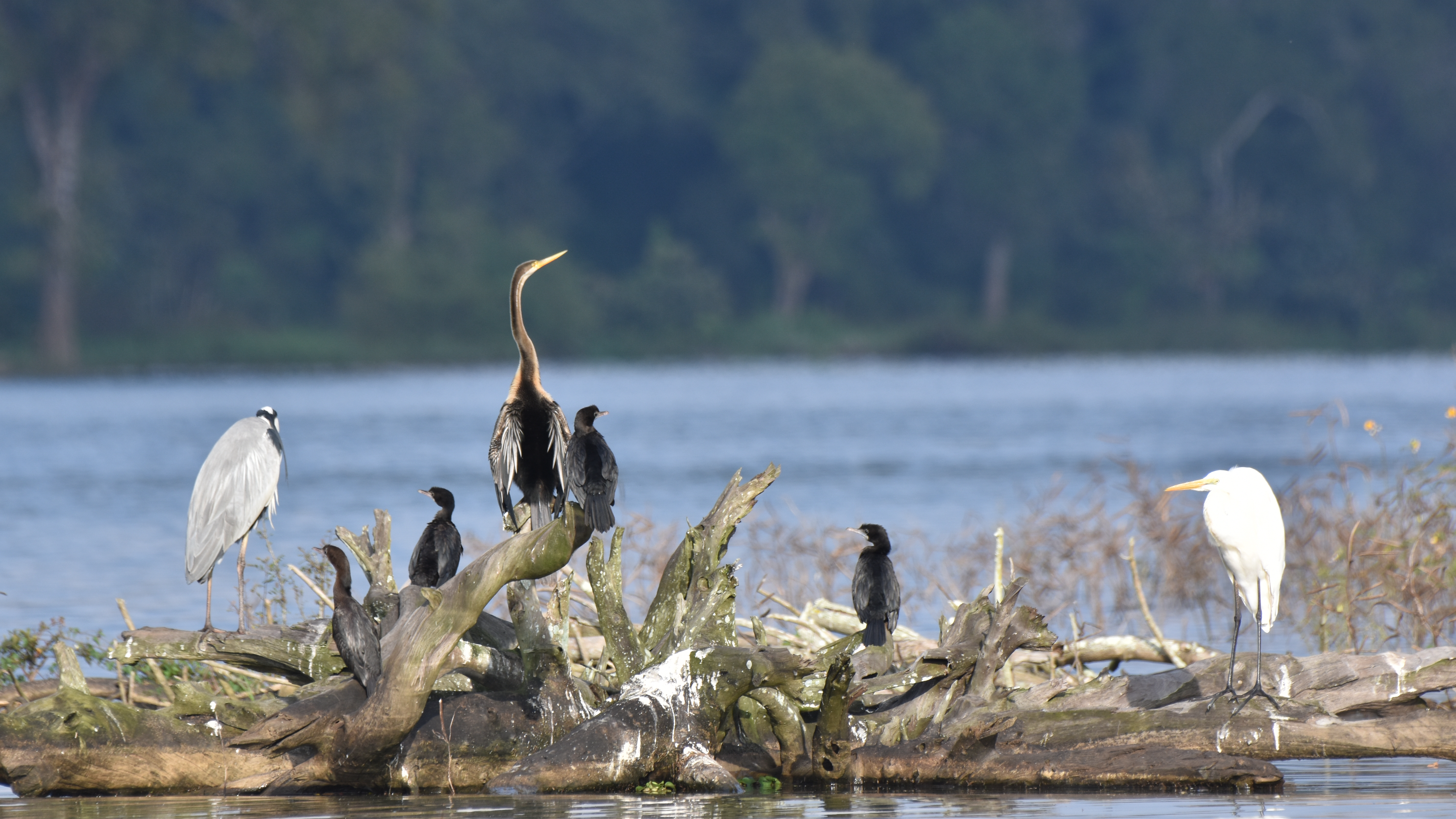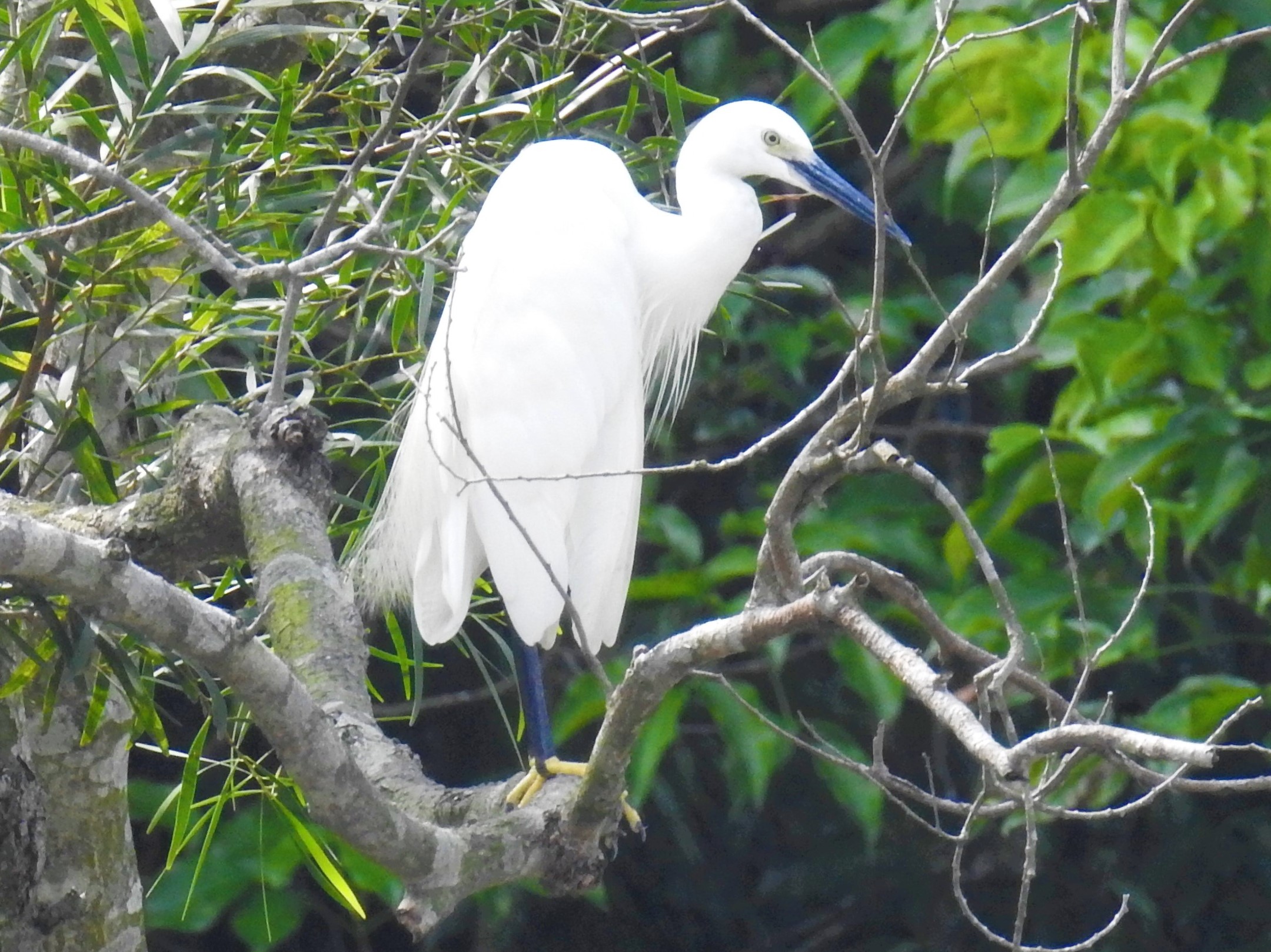|
Egret
Egrets ( ) are herons, generally long-legged wading birds, that have white or buff plumage, developing fine plumes (usually milky white) during the breeding season. Egrets are not a biologically distinct group from herons and have the same build. Biology Egrets hold a separate group with bitterns and herons within the 74 species found in the bird family Ardeidae. Many egrets are members of the genus, genera ''Egretta'' or ''Ardea (genus), Ardea'', which also contain other species named as herons rather than egrets. The distinction between a heron and an egret is rather vague, and depends more on appearance than biology. The word "egret" comes from the French word ''aigrette'' that means both "silver heron" and "brush", referring to the long, filamentous feathers that seem to cascade down an egret's back during the breeding season (also called "egrets"). Several of the egrets have been reclassified from one genus to another in recent years; the great egret, for example, has be ... [...More Info...] [...Related Items...] OR: [Wikipedia] [Google] [Baidu] |
Bubulcus
The cattle egret (formerly genus ''Bubulcus'') is a cosmopolitan clade of heron (family Ardeidae) in the genus '' Ardea'' found in the tropics, subtropics, and warm-temperate zones. According to the IOC bird list, it contains two species, the western cattle egret and the eastern cattle egret, although some authorities regard them as a single species. Despite the similarities in plumage to the egrets of the genus ''Egretta'', it actually belongs to the genus '' Ardea''. Originally native to parts of Asia, Africa, and Europe, it has undergone a rapid expansion in its distribution and successfully colonised much of the rest of the world in the last century. They are white birds adorned with buff plumes in the breeding season. They nest in colonies, usually near bodies of water and often with other wading birds. The nest is a platform of sticks in trees or shrubs. Cattle egrets exploit drier and open habitats more than other heron species. Their feeding habitats include seas ... [...More Info...] [...Related Items...] OR: [Wikipedia] [Google] [Baidu] |
Great Egret
The great egret (''Ardea alba''), also known as the common egret, large egret, great white egret, or great white heron, is a large, widely distributed egret. The four subspecies are found in Asia, Africa, the Americas, and southern Europe. Recently, it has also been spreading to more northern areas of Europe. Distributed across most of the Tropics, tropical and warmer temperate regions of the world, it builds tree nests in colonies close to water. Taxonomy The great egret was Species description, formally described in 1758 by the Swedish naturalist Carl Linnaeus in the 10th edition of Systema Naturae, tenth edition of his ''Systema Naturae'' under the binomial nomenclature, binomial name ''Ardea alba''. He specified the type locality (biology), type locality as Europe. The scientific name comes from Latin ''ardea'', "heron", and ''alba'', "white". Like all egrets, it is a member of the heron family (biology), family, Ardeidae. Traditionally classified with the storks in the ... [...More Info...] [...Related Items...] OR: [Wikipedia] [Google] [Baidu] |
Western Cattle Egret
The western cattle egret (''Ardea ibis'') is a species of heron (family (biology), family heron, Ardeidae) found in the tropics, subtropics and warm temperate zones. Formerly, most taxonomic authorities lumped this species and the eastern cattle egret together (called the cattle egret), but the two cattle egrets are now treated as separate species. Despite the similarities in plumage to the egrets of the genus ''Egretta'', it is more closely related to the herons of ''Ardea (genus), Ardea''. Originally native to parts of Asia, Africa and Europe, it has undergone a rapid expansion in its range (biology), distribution and successfully Colonisation (biology), colonised much of the rest of the world in the last century. It is a white bird adorned with buff feather, plumes in the breeding season. It nests in bird colony, colonies, usually near bodies of water and often with other wading birds. The bird nest, nest is a platform of sticks in trees or shrubs. Western cattle egrets exploi ... [...More Info...] [...Related Items...] OR: [Wikipedia] [Google] [Baidu] |
Little Egret
The little egret (''Egretta garzetta'') is a species of small heron in the family Ardeidae. It is a white bird with a slender black beak, long black legs and, in the western race, yellow feet. As an aquatic bird, it feeds in shallow water and on land, consuming a variety of small creatures. It breeds colonially, often with other species of water birds, making a platform nest of sticks in a tree, bush or reed bed. A clutch of three to five bluish-green eggs is laid and incubated by both parents for about three weeks. The young fledge at about six weeks of age. Its breeding distribution is in wetlands in warm temperate to tropical parts of Asia, Africa, Australia, and Europe. A successful colonist, its range has gradually expanded north, with stable and self-sustaining populations now present in the United Kingdom. In warmer locations, most birds are permanent residents; northern populations, including many European birds, migrate to Africa and southern Asia to over-winter there ... [...More Info...] [...Related Items...] OR: [Wikipedia] [Google] [Baidu] |
Snowy Egret
The snowy egret (''Egretta thula'') is a small white heron. The genus name comes from Provençal French for the little egret, , which is a diminutive of , 'heron'. The species name ''thula'' is the Araucano term for the black-necked swan, applied to this species in error by Chilean naturalist Juan Ignacio Molina in 1782.Jobling, 2010, p.143, 385 The snowy egret is the American counterpart to the very similar Old World little egret, which has become established in the Bahamas. At one time, the plumes of the snowy egret were in great demand as decorations for women's hats. They were hunted for these plumes and this reduced the population of the species to dangerously low levels. Now protected in the United States by law, under the Migratory Bird Treaty Act, this bird's population has rebounded. Description Adult snowy egrets are entirely white apart from the yellow lores between the long black bill and the eye, black legs, and bright yellow feet. The nape and neck bear l ... [...More Info...] [...Related Items...] OR: [Wikipedia] [Google] [Baidu] |
Egrets In AP W IMG 4220
Egrets ( ) are herons, generally long-legged wading birds, that have white or buff plumage, developing fine plumes (usually milky white) during the breeding season. Egrets are not a biologically distinct group from herons and have the same build. Biology Egrets hold a separate group with bitterns and herons within the 74 species found in the bird family Ardeidae. Many egrets are members of the genera ''Egretta'' or '' Ardea'', which also contain other species named as herons rather than egrets. The distinction between a heron and an egret is rather vague, and depends more on appearance than biology. The word "egret" comes from the French word ''aigrette'' that means both "silver heron" and "brush", referring to the long, filamentous feathers that seem to cascade down an egret's back during the breeding season (also called "egrets"). Several of the egrets have been reclassified from one genus to another in recent years; the great egret, for example, has been classified as a me ... [...More Info...] [...Related Items...] OR: [Wikipedia] [Google] [Baidu] |
Mesophoyx
The medium egret (''Ardea intermedia''), median egret, smaller egret or intermediate egret, is a medium-sized heron. Some taxonomists put the species in the genus ''Egretta'' or ''Mesophoyx''. It is a resident breeder in southern and eastern Asia. Taxonomy Some authorities classify the intermediate egret species complex in its own monotypic genus, ''Mesophoyx'', while others place it with the smaller egrets in ''Egretta''. There were three recognised subspecies, and these are sometimes raised in to species: * '' A. i. brachyrhyncha'' Brehm, 1854 "yellow-billed egret" - sub-Saharan Africa * ''A.i. intermedia'' Wagler, 1827 "intermediate egret" - Asia from the Russian Far East to Japan to India and the Greater Sundas * '' A. i. plumifera'' Gould, 1848 "plumed egret" - eastern Indonesia, New Guinea and Australia. ''A.(i.) intermedia'' differs from ''A.(i.) brachyrhyncha'' and ''A. (i.) plumifera'' by having a black bill when in breeding plumage, while ''A.(i.) plumifera'' has ... [...More Info...] [...Related Items...] OR: [Wikipedia] [Google] [Baidu] |
Western Reef Heron
The western reef heron (''Egretta gularis''), also called the western reef egret, is a medium-sized heron found in southern Europe, Africa and parts of Asia. It has a mainly coastal distribution and occurs in several plumage forms: a slaty-grey plumage which can only be confused with the rather uncommon dark morph of the little egret (''Egretta garzetta''); a white form which can look very similar to the little egret, although the reef heron's bill tends to be paler and larger; and a black form with a white throat, ''E. g. gularis'', found in West Africa. There are also differences in size, structure and foraging behaviour. There have been suggestions that the species hybridizes with the little egret, and based on this, some authors treat ''schistacea'' and ''gularis'' as subspecies of ''Egretta garzetta''. Works that consider the western reef heron as a valid species include the nominate ''gularis'' and ''schistacea'' as subspecies. Description This bird has two plumage colour ... [...More Info...] [...Related Items...] OR: [Wikipedia] [Google] [Baidu] |
Reddish Egret
The reddish egret (''Egretta rufescens'') is a medium-sized heron that is a resident breeder in Central America, the Bahamas, the Caribbean, the Gulf Coast of the United States (primarily Texas), and Mexico. The egret is known for its unusual foraging behavior compared to other herons as well as its association with mud flats, its habitat of choice. In the past, this bird was a victim of the plume trade and is North America’s "rarest and least studied ardeid." Taxonomy The reddish egret was formally described in 1789 by the German naturalist Johann Friedrich Gmelin in his revised and expanded edition of Carl Linnaeus's ''Systema Naturae''. He placed it with the herons, cranes and egrets in the genus '' Ardea'' and coined the binomial name ''Ardea rufescens''. Gmelin based his description on that of the English ornithologist John Latham who in 1785 had included the species in his multi-volume ''A General Synopsis of Birds''. Latham had in turn based his own description on t ... [...More Info...] [...Related Items...] OR: [Wikipedia] [Google] [Baidu] |






